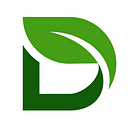The Role of Drones in Agriculture
Agriculture drones are slated to occupy a global market space of about $4.4 billion by the year 2024. The compounded annual growth rate in this sector is 30.2%.
Drones aren’t going anywhere. As interest around drones in agriculture is mounting, this tech represents major potential for farmers worldwide.
Drones have both agricultural and livestock applications, from monitoring to topographical analysis to herd management and much more.
The team at Dimitra assembled these lists to give you some insights into how drones work in agriculture, and how they are making an impact for farmers.
Drones + Agriculture: Capabilities & Benefits
Here is a list of the capabilities and benefits drones provide in agriculture:
- Cultivation — The growing itself is supported by autonomous spot weeding, spraying, and seeding. Drones are easier and cheaper than any other existing machine-based process.
- Data gathering — Farmers benefit from all kinds of information, much of which can be gathered by drones. Drones gather, store, and transmit data in code, in videos, in photos (advanced imaging), and even by transporting physical samples.
- Harvesting — Drones can alleviate manual processes — or those previously done by huge and expensive machines — during harvest with tasks like selecting, picking, and handling.
- Surveillance — An easy, autonomous vehicle that can navigate the skies but doesn’t require the investment of a prop plane or helicopter? That’s appealing to any farmer, especially cost-conscientious ones. Drone surveillance can give farmer’s a bird’s eye view of the land by field scouting, crop monitoring, intrusion detection, and more.
- Crop management tasks — Larger drones can be outfitted with additional tools and features that support pruning/thinning, mowing, and tilling/soil preparation.
Want to explore how the Dimitra Connected Farmer App uses data from sources like drones as a solution for agriculture globally? Watch this video.
Drones + Livestock Management
Drones are no less powerful a tool in livestock management, providing benefits for the following:
- Phenotyping — For livestock management, drones are useful in collecting data for genetics and breeding programs, both in terms of the animals themselves and in animal behavior data collection.
- Livestock tracking — Farmers can detect and reduce theft and enhance loss prevention through drone surveillance and tracking.
- Assistance and automations — Large-scale or small-scale livestock management can benefit from tech-enhanced assistance and automations. Drones can be used as herding devices, which makes them useful in herd management, milking, and more.
Eager to see a purpose-built tool for livestock management? Check out the Dimitra Livestock Guru Platform.
Drones Give Farmers an Advantage
Many of the benefits drones provide to farmers mean less manual work and more insights into field or herd yield, productivity, health, etc.
There are also benefits to the operations of the farm. Drones are an affordable technology that could be instrumental in the growing issue of food insecurity. Drones can work 24/7, which makes them an appealing alternative to manual labor. They can operate in almost any weather condition and take over repetitious or hazardous tasks.
Many crops face a narrow harvest time window, which makes time of the essence for farmers who need that yield. Coffee is a good example.
Example: Drones and Coffee
Coffee is a fast-growing, high-revenue crop. It also requires some precision farming and must be well-managed throughout the supply chain. Dynamics throughout the entire lifecycle of coffee impact its value in the market.
For farmers to take advantage of all of the possibilities that come with growing coffee, drones can be invaluable. Drones in flight can capture imagery of pests, diseases, nutrient or water issues, and other important crop-related issues. For farmers growing coffee, early alerts can be the difference between success or failure, and drones can provide this information as fast as possible for prevention measures to be taken.
Drones can count coffee trees and track water levels. They are useful for early detection of growing issues and surveying crops after weather events or changes. Some drone models can cover as much as 400 hectares of land in one flight, and are equipped with high accuracy tech to stay on track with or without control points.
The imagery or footage captured by drones is one key benefit, but drones can also be used as farming tools in crop spraying. This is cheaper, easier, and faster than any manual effort, and minimizes pesticide exposure for farm workers.
Drones improve yield in coffee, enabling farmers to strategize around problems and create more predictability around this valuable crop.
Drone Data: Dimitra Platforms
The Dimitra Connected Farmer App and Livestock Guru Platform have awesome capabilities when it comes to drone data. Data-driven farming is the goal of using tech like drones. With bigger, more comprehensive, cleaner data, farmers can not just go day-to-day, but learn from the past, see problems before they escalate, and forecast into a better future.
With Dimitra’s agtech products, users get instant access to purpose-built platforms that can collect, store, aggregate, and generate reports on data from all types of sources, including drones. Visit www.dimitra.io to learn all about it.
Up next — Want to see drones in action? Check out Drone Solutions to fight Fall Armyworm in Papua New Guinea.
